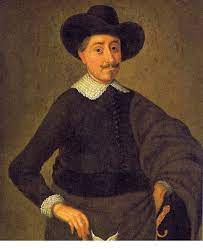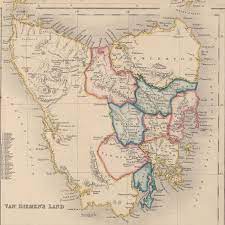
Anthony van Diemen was the Governor of the Netherlands East Indies during the time of the exploration of Abel Tasman. Tasmania was first known as Van Diemen’s Land, the name given to the island by Anel Tasman. The name was changed in 1856 to Tasmania.
Anthonio (Anthonie, Antonie, Anthony) van Diemen, was a prominent figure in the Netherlands East Indies Company (VOC) during the 17th century. Born into the family of Mayor Bartolomeus van Diemen, Anthony faced early setbacks as a merchant in Amsterdam, experiencing bankruptcy and adopting the alias Thonis Meeuwisz to join the Mauritius bound for Batavia in 1618.
Despite initial suspicions about his true identity, van Diemen’s talents were recognised by Jan Pieterszoon Coen, leading to his appointment as a clerk in the VOC’s service in 1619. Rising swiftly through the ranks, he became an accountant, chief merchant, and, in 1636, the Governor General of the Dutch East Indies. His tenure marked significant milestones, including the discovery of New Amsterdam (later New York), successful military campaigns in Ceylon against the Portuguese, and the conquest of Malacca in 1641.

Van Diemen’s proactive leadership extended to cultural and legal initiatives, such as founding a Latin school and churches in Batavia, and introducing the “Bataviasche Statutes,” the first code of law, in 1642. The codes were developed by the Dutch diplomat Joan Maetsuyker; an island off the coast of Tasmania is named after him.. Van Diemen’s strategic vision also influenced exploration efforts, with Abel Tasman undertaking a significant expedition in 1642 to explore Australia, New Zealand, and Van Diemen’s Land (Tasmania).
Challenges faced by van Diemen, included an assassination attempt in 1644 and a failed war fleet expedition to Cambodia. Tragically, his death in 1645 halted plans for a retaliatory campaign. Despite this, van Diemen’s legacy endured, shaping the VOC’s presence in the Netherlands East Indies for years to come. His widow received a significant donation from the VOC, emphasising the impact of his contributions to the company and the region.
Source: Wikipedia (Dutch)
See also: The Arms of Anthony van Diemen


